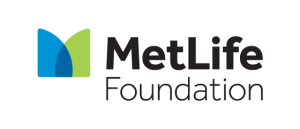Financial health impact comes from getting to “yes” on two questions:
-
- Will my product help users improve their financial health?
- Will people who need this product choose to use it?
The Financial Health Network applies our rigorous testing of financial health products and features as a key strategy to address the first question about product effectiveness. With the support of MetLife Foundation, we developed the Financial Health Leaders Lab to help a select group of companies incorporate behavioral insights into the design of new financial health products and test the products’ financial health impact. Financial services companies need information about effectiveness to refine and improve their offerings, and to invest in products that work.
Our recent work with two fintechs in the Leaders Lab, Elevate and Finicity, a Mastercard company, underscores the importance of addressing the second half of the impact equation through marketing strategy and finding the right product-market fit. We worked with both companies to test the impact of providing Finicity’s Mvelopes product to borrowers on Elevate’s RISE Credit platform; ultimately, we were unable to determine Mvelopes’ effectiveness because too few borrowers signed up. In this blog, we share some of our learnings from this project, including the critical step of ensuring the right audience finds and engages with a financial health product in order for the product to have an impact.
3 Ways To Increase Financial Product Uptake
Finicity’s Mvelopes product applies the concept of envelope-based budgeting to a digital environment, where its users can connect and view all of their financial accounts, create and label envelopes for different purposes, and set a budget. Elevate, a company that provides access to credit for people who have limited savings and non-prime credit histories, saw an opportunity to help RISE Credit borrowers better manage their credit and pay down debt by providing them with Mvelopes for free.
RISE Credit launched a marketing campaign that used several methods to encourage sign-ups for Mvelopes. These different approaches translated into different levels of enrollment. Drawing from these companies’ experiences and our knowledge of behavioral insights, here are three ways for financial health innovators to increase product uptake:
-
- Remove friction. RISE Credit initially offered Mvelopes as a thank you for completing a brief survey about financial health. This seemed to be a point of friction, creating multiple steps to enroll in Mvelopes. Other offers that enabled Mvelopes enrollment without requiring a survey generated higher enrollment rates. Research has proven the benefits of removing friction, as demonstrated through increased completion rates for college financial aid applications with individualized support and helping consumers switch to savings accounts with higher interest rates by providing a pre-filled return form to switch accounts.
- Be transparent. RISE Credit found that its borrowers responded better when the company used a series of FAQs addressing potential enrollment concerns and explaining how RISE Credit might benefit from customers’ improved financial health. When rolling out a new financial health product or opportunity, consider explaining your interests when offering something that might seem too good to be true for the consumer. Some studies have found that disclosing a conflict of interest can increase trust: For example, a study of doctors found that disclosing their financial incentives increased patients’ trust.
- Connect with customers who need your products. Through our analysis, we found that the borrowers who signed up for Mvelopes were those who were more likely to struggle with their loans. Mvelopes may have been more relevant for these borrowers than for those who faced fewer challenges with loans. It’s important to leverage data, such as loan performance data, to identify the right audience and target customer segments who will find your solution most relevant and beneficial. In another study with the Leaders Lab, Commonwealth Bank of Australia targeted customers who had recently experienced debt-management challenges and enabled them to make a payment using their tax refunds. Commonwealth Bank of Australia found that this group responded positively to the opportunity to use their tax refunds and made more debt repayments.
Although these strategies didn’t generate sufficient uptake for an impact analysis of the Mvelopes product, we learned about strategies to guide the right customers to product adoption – an equally important component of financial health impact. Learning through trial and error can provide valuable information about what does and doesn’t work. This is a critical step toward developing an ecosystem of products and services that support financial health. The Financial Health Network thanks Elevate and Finicity for sharing their experience and contributing to our collective knowledge.
The Financial Health Leaders Lab, with the support of MetLife Foundation, works with a select group of companies to develop and test innovations to improve financial health. All opinions are those of the Financial Health Network and not our funders or sponsors. Explore other recent financial health solutions identified through the Leaders Lab.


